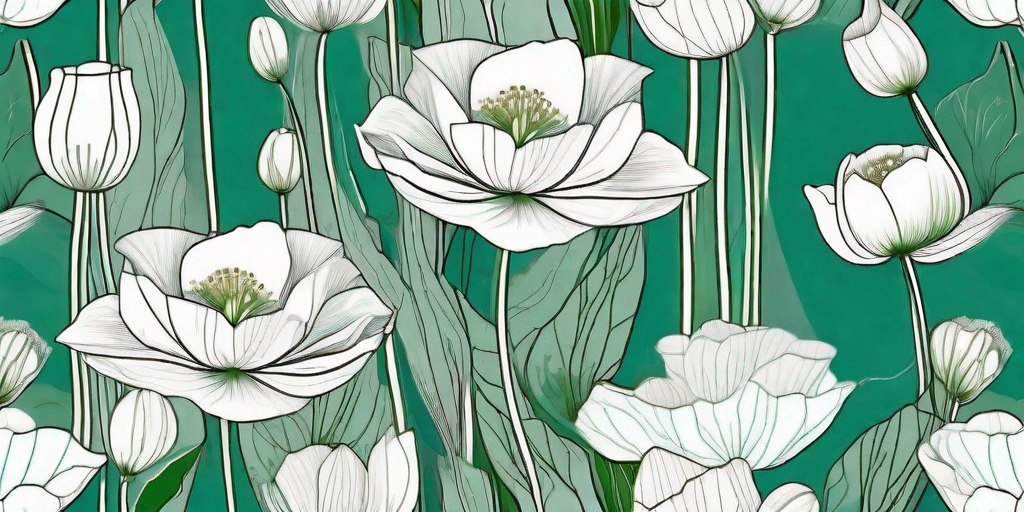
Water poppies, scientifically known as Hydrocleys nymphoides, are a sight to behold. These aquatic beauties, with their delicate yellow flowers and lily-like leaves, can transform any pond or water garden into a magical oasis. But how do you grow and care for them? Well, buckle up, because we're about to embark on a whimsical journey of horticulture and water poppies!
The Basics of Water Poppies
Before we dive into the nitty-gritty of growing and caring for water poppies, let's get to know these charming little plants a bit better. Water poppies are native to South America, but they've made themselves at home in water gardens around the world. They're perennials, which means they'll keep coming back year after year to brighten up your pond.
Water poppies are known for their floating leaves and bright yellow flowers that bloom from late spring to early fall. They're also a hit with wildlife, attracting a variety of insects and providing a habitat for small fish.
What Do Water Poppies Look Like?
Water poppies have a unique and enchanting appearance. Their leaves are round and heart-shaped, with a glossy green color that contrasts beautifully with the bright yellow of their flowers. The flowers themselves are quite delicate, with four petals and a cluster of stamens in the center.
When in full bloom, a water poppy plant can look like a floating bouquet of sunshine. It's no wonder these plants are a favorite among water garden enthusiasts!
How to Grow Water Poppies
Now that we've covered the basics, let's get down to business. Growing water poppies can be a fun and rewarding experience, but it does require some knowledge and care. Don't worry, though - we've got you covered!
First things first, water poppies are aquatic plants, which means they need to be planted in water. They prefer shallow, still or slow-moving water, and they need plenty of sunlight to thrive. So, if you're planning on adding water poppies to your garden, make sure you have the right conditions.
Planting Water Poppies
When it comes to planting water poppies, you have a couple of options. You can either plant them directly in the pond, or you can plant them in a pot and then place the pot in the water. Either way, the roots of the water poppies need to be submerged in water.
Water poppies prefer a soil that is rich in organic matter, so make sure to choose a good quality aquatic compost. Once you've planted your water poppies, place them in a sunny spot in your pond. They should start to bloom in a few weeks.
Caring for Water Poppies
Water poppies are relatively low-maintenance plants, but they do require some care to keep them looking their best. They need plenty of sunlight, so make sure they're not being overshadowed by other plants. They also prefer warm temperatures, so they may not survive in colder climates.
One thing to keep in mind is that water poppies can be quite invasive. They reproduce quickly and can take over a pond if not kept in check. To prevent this, make sure to regularly remove any excess plants.
Common Problems and Solutions
Like any plant, water poppies can encounter a few problems. But don't fret - most of these issues are easily solvable. Here are some common problems and their solutions.
Yellowing Leaves
If the leaves of your water poppies are turning yellow, it could be a sign of nutrient deficiency. Try adding a water-soluble fertilizer to your pond to give your plants the nutrients they need.
Yellowing leaves could also be a sign of too much sunlight. If your water poppies are in direct sunlight all day, try moving them to a spot with a bit of shade.
Not Flowering
If your water poppies aren't flowering, it could be because they're not getting enough sunlight. Make sure they're in a sunny spot in your pond. If they're still not flowering, try adding a water-soluble fertilizer to give them a boost.
It could also be that your water poppies are too crowded. If they're competing for space and nutrients with other plants, they may not bloom. Try thinning out your plants to give them more room to grow.
Frequently Asked Questions
-
Are water poppies hard to grow?
Not at all! Water poppies are relatively easy to grow, as long as they have the right conditions. They need plenty of sunlight, warm temperatures, and shallow, still or slow-moving water. -
Can water poppies survive in cold climates?
Water poppies prefer warm temperatures and may not survive in colder climates. However, you can try bringing them indoors during the winter to keep them alive. -
Are water poppies invasive?
Yes, water poppies can be quite invasive. They reproduce quickly and can take over a pond if not kept in check. To prevent this, make sure to regularly remove any excess plants.
Conclusion
And there you have it - a comprehensive guide to growing and caring for water poppies. These enchanting aquatic plants can add a touch of magic to any water garden, and with the right care, they can provide a burst of sunshine all summer long.
So why not give water poppies a try? With their delicate yellow flowers and lily-like leaves, they're sure to be a hit in your garden. Happy gardening!















